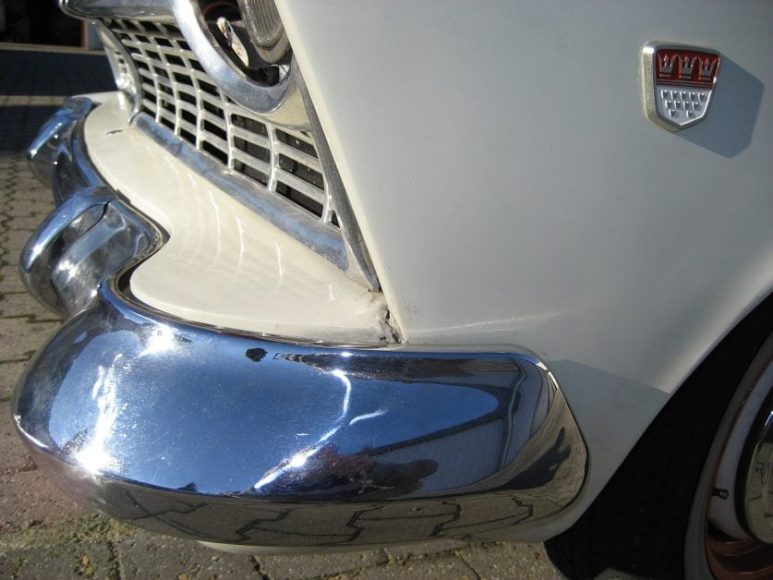How does a bumper car work: understanding the dynamics

Step right up and buckle in for a thrilling ride into the fascinating world of bumper cars!
Have you ever wondered how these zippy little machines manage to whiz around, bouncing off each other with unrivaled glee?
Prepare to have your curiosity ignited as we delve into the mesmerizing mechanics behind the magic.
From the wonders of Newton’s third law to the electrifying energy conversions that power these joyful collisions, we’ll uncover the secrets that make bumper cars a whirlwind of exhilaration.
So buckle up and let’s explore how these bumpy beauties work their gravity-defying wonders!
how does a bumper car work
Bumper cars work by operating on Newton’s third law of motion.
These cars have large rubber bumpers that diffuse the force of collisions, which run on electricity.
The electricity is carried by a pole on the back of the car and transmitted through a wire grid in the ride’s ceiling.
This electricity is converted into kinetic energy and some heat, allowing the cars to move.
When two bumper cars collide, the direction of motion of the drivers before the collision is maintained, while the cars may stop or change direction.
Factors such as the type of collision, car velocity, and driver mass play a role in determining the outcome of the collision.
Different types of bumper cars exist, including those with poles, electric floors, and rechargeable batteries.
The collisions in bumper cars cause the car being hit to bounce in the opposite direction, and although the bumpers cushion the force, drivers still feel a slight jerk from the impact.
The experience of the impact is influenced by the velocity and mass of the cars and drivers.
Key Points:
- Bumper cars work based on Newton’s third law of motion.
- Large rubber bumpers diffuse the force of collisions.
- The cars run on electricity carried by a pole and transmitted through a ceiling grid.
- The electricity is converted into kinetic energy and heat.
- Collisions maintain the direction of motion of the drivers before the collision.
- Factors like collision type, car velocity, and driver mass determine the outcome.
Check this out:
💡 Did You Know?
1. Invented in the early 20th century by Max and Harold Stoehrer, the concept of bumper cars was initially inspired by the idea of a “Dodgem” ride at amusement parks.
2. Bumper cars operate by utilizing a simple yet effective electrical circuit system underneath the floor. The car’s safety bumper is connected to a conductive floor, and a pole with a metal ring touches the ceiling, completing the circuit upon contact.
3. Surprisingly, most bumper cars do not have an accelerator pedal. Instead, they rely on a single control panel that consists of a steering wheel and a button for activating the forward or reverse motion.
4. The common misconception that bumper cars are powered by a gasoline engine is entirely false. In reality, they are powered by electricity provided through overhead cables or from a power grid connected to each car.
5. To promote a safer experience, the design of modern bumper cars includes important safety features such as a rubber or foam bumper around the car, reinforced steel chassis, and a well-insulated electrical system to protect riders in case of accidents.
Newton’s Third Law And Bumper Car Operation
Bumper cars rely on Newton’s third law of motion to operate. This law states that every action has an equal and opposite reaction. In the case of bumper cars, when two cars collide, the force applied to one car is transferred to the other car, resulting in it moving in the opposite direction.
Improved text:
Bumper cars operate based on one of the fundamental principles in physics, Newton’s third law of motion. According to this law, for every action, there is an equal and opposite reaction. In the context of bumper cars, when two cars collide, the force exerted on one car is transferred to the other car, causing it to move in the opposite direction.
- Bumper cars rely on Newton’s third law of motion
- Every action has an equal and opposite reaction
- Force from one car is transferred to the other car upon collision
“In the context of bumper cars, this means that when two cars collide, the force exerted on one car is transferred to the other car, causing it to move in the opposite direction.”
Rubber Bumpers: Diffusing Collision Forces
To minimize the impact of collisions, bumper cars are equipped with large rubber bumpers. These bumpers serve as shock absorbers and are designed to diffuse the force of the collision. When two cars collide, the rubber bumpers compress, absorbing some of the energy and reducing the amount of force transferred to the drivers.
This cushioning effect helps to protect the drivers from injury while still allowing for an exciting and dynamic ride.
- Bumper cars have large rubber bumpers that serve as shock absorbers.
- The rubber bumpers compress upon collision, reducing the force transferred to the drivers.
- The cushioning effect of the bumpers helps to protect the drivers from injury.
“Bumper cars are designed to minimize the impact of collisions by utilizing large rubber bumpers as shock absorbers.“
Power Source: Bumper Cars Run On Electricity
Bumper cars are an exciting amusement park ride that stands out for its safety and environmental benefits. Unlike their traditional gasoline-powered counterparts, bumper cars run solely on electricity.
This reliance on electric power brings several advantages:
Safety: Bumper cars are considered a safer alternative due to the absence of combustion engines. This eliminates the risk of fire hazards and reduces the chances of accidents caused by fuel-related issues.
Environmental friendliness: The use of electricity in bumper cars significantly reduces harmful emissions. Since there is no combustion involved, no greenhouse gases or pollutants are released into the atmosphere during operation.
The driving force behind bumper cars lies in their powerful electric motors. These motors generate the necessary energy to propel the wheels, enabling the cars to swiftly navigate around the designated track.
By harnessing electricity instead of relying on traditional gasoline engines, bumper cars offer an enjoyable and eco-friendly experience for riders of all ages.
- Bumper cars are powered by electricity, ensuring a safer ride.
- They eliminate the need for combustion engines, resulting in fewer emissions.
- Electric motors drive the wheels, allowing swift movement around the track.
“Bumper cars provide a thrilling and environmentally friendly experience.”
Electricity Transmission: The Pole And Wire Grid System
To transmit electricity to the bumper cars, a pole is attached to the back of each car. This pole makes contact with a wire grid in the ride’s ceiling, completing the electrical circuit. Through this connection, the cars receive a continuous supply of electricity to power their motors. This overhead system allows for efficient energy transmission and ensures that the cars can operate continuously throughout the ride.
Conversion Of Electricity: Kinetic Energy And Heat
When the bumper cars receive electricity, it is converted into kinetic energy, which allows the cars to move. The electric motor takes the electrical energy and converts it into mechanical energy, which propels the vehicle forward. Additionally, some of the electrical energy is converted into heat due to the resistance in the motor and other components. Although the conversion process results in some energy loss, it is still an efficient way to power the bumper cars.
- Electricity is converted into kinetic energy.
- Electric motor converts electrical energy into mechanical energy.
- Some energy is lost as heat due to resistance.
- Efficient way to power bumper cars.
Collisions And Changes In Motion: Understanding Inertia
Collisions are a significant aspect of the bumper car experience. When two cars collide, they undergo changes in motion due to the concept of inertia. Inertia refers to the object’s tendency to resist changes in its state of motion. In the case of bumper cars, the drivers’ motion remains the same in terms of direction before the collision. However, the cars may either come to a stop or change direction upon impact. This is primarily because the force of the collision impacts the cars’ velocity, potentially altering their course.
Maintaining Direction: Impact On Car Movement
An interesting aspect of bumper car collisions is that the direction of the drivers’ motion just before the collision is generally maintained. However, this does not mean that the cars will continue moving in a straight line. The force of the collision can cause the cars to stop or change direction, depending on the angle and velocity of the impact. This adds an unpredictable element to the ride and keeps the drivers on their toes.
Mass Differences: Unequal Changes And Jolts
Mass differences play a crucial role in the movement and experience of collisions in bumper cars. When cars with different masses collide, the one with lower mass tends to undergo a greater change in motion. Consequently, drivers may feel jolts or jerks as the force is unevenly transferred. Several factors, including collision type, car velocity, and driver mass, contribute to the dynamics of bumper car collisions.
To fully appreciate the excitement and mechanics of bumper car rides, it is essential to comprehend key principles governing their operation. Newton’s third law of motion and the use of rubber bumpers are fundamental in understanding how these rides work. Moreover, the combination of electricity as a power source, transmission through a pole and wire grid system, and the efficient conversion of energy into kinetic energy and heat ensure both excitement and safety. By grasping how collisions result in changes in motion and being aware of factors like inertia and mass differences, we can fully immerse ourselves in the exhilarating dynamics of bumper car rides.
FAQ
How do bumper cars get electricity?
Unlike traditional bumper cars that rely on an electric floor or connecting wires, modern bumper cars are powered by rechargeable batteries. The cars are equipped with a simple circuit system that is activated when the batteries are properly charged. This allows the bumper cars to move and operate without the need for external electrical sources. The use of rechargeable batteries provides a more convenient and efficient solution, ensuring a continuous and enjoyable experience for riders without the limitations of being connected to a power source.
What are the controls on a bumper car?
Bumper car controls typically consist of an accelerator and a steering wheel, allowing riders to navigate through the chaotic bursts of collisions. To enhance the unexpectedness of the ride, the steering wheel is designed to enable reverse movement when turned sharply in either direction. This feature becomes crucial during the frequent pile-ups that add an adventurous twist to the bumper car experience, providing riders with the ability to maneuver out of tight spots and continue the enthralling journey.
Do bumper cars have a motor?
Bumper cars indeed have motors, but they differ from conventional cars as they run on electricity. These small vehicles are equipped with electric motors that propel their wheels. Unlike regular cars that rely on internal combustion engines, bumper cars receive their power from a conductive floor or ceiling, typically comprised of a metal grid or overhead wires. This electric supply system ensures that the cars can move swiftly and safely around the arena, adding to the playful and bumping experience for riders.
Are you supposed to bump in bumper cars?
No, bumper cars were not originally designed to bump into each other. In fact, the original intention was for them to avoid collisions. However, over time, the purpose of bumper cars has evolved into a thrilling activity that encourages participants to ram into each other as much as possible. Nowadays, the joy of bumping into other cars has become an integral part of the bumper car experience, providing both adults and kids with an exhilarating and enjoyable time at amusement parks.

